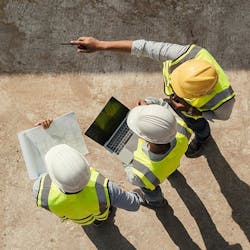How Utilities Can Unlock Extreme Weather Resilience with AI
Utilities are being pushed to the brink. Catastrophic hurricanes, heat waves, winter storms, and floods have caused extensive damage to our aging global infrastructure. Remediation challenges are becoming unmanageable, and extreme weather is here to stay.
Many utility organizations lack clarity and resources to mitigate these situations as they unfold. This causes more time, money, and energy spent on fixing avoidable problems, putting the public’s safety and purse at risk. This vicious cycle continues to repeat itself.
As governing bodies are calling on utilities to implement change, we can’t help but wonder: How are we just now learning the lessons of the past? What will we do to break the cycle?
The combination of rich data and AI with human observation has proven to be a solution. That’s probably why 74% of energy and utility companies are implementing or exploring adding AI solutions to their operations.
Let’s discuss how utilities can build up their resilience using AI.
An Always-On Data Strategy
When disaster strikes, field workers need to react. They must address power outages, water leakages, and more at once. The problem is getting stuck in reaction loops, relying on pen-and-paper processes to catalog damages at that moment only.
What about monitoring how a site evolves? Or making sure the data collected is current, scaleable, and useful – able to make utility companies smarter about how they proactively approach the next disaster at that site and beyond?
A report by EY cited 23% of utilities said the lack of access to critical data is a top challenge. Without it, field workers only provide temporary solutions until the next disaster.
One fix here is crowdsourcing data from two points of view: field workers on site and community members who can help fill missing gaps in the absence of workers.
If a tree falls over a powerline in a storm, workers can take site surveys using their mobile devices to collect risk information when they arrive. The video and audio are then analyzed by an AI algorithm, flagging the present hazards and the best courses of action. This happens throughout the day as conditions change.
The perspective must shift from reactive to proactive. Before the storm, say someone in the neighborhood noticed overgrown branches and flagged the issue to their local utility. Someone could have removed the branch, completely preventing the downed power line from occurring.
Crowdsourcing voice and video at worksites make the utility’s AI database more intelligent daily. That data fuels predictive analytics that alert utility companies to implement preventative measures.
Making Every Moment Productive and Safe
Every minute counts during disasters. Utilities' top priority should be reducing the duration of each job.
Amid crisis, fieldworkers may be assigned a job they don’t do regularly or even be sent to an unfamiliar location. Utilities from all over the country are sent to disaster zones to help restore services. This creates knowledge gaps, with some less experienced workers assigned specific tasks. Field workers need training and development tools that don’t require a professor, textbook, or time away from a job site in a simulated environment. They need just-in-time assistance.
If field workers need a refresher on the operational processes for a machine they don’t operate often, they can tap on the AI buddy in their pocket. This allows them to access microlearning modules that help field workers learn new skills and implement solutions faster.
But what happens when outages impact mobile devices?
Many field workers cited a lack of 4G mobile coverage as a roadblock to open communication with their managers and back office. Instead of a live network, field workers need AI embedded in an edge network on their phones. During an outage or when off the grid, field workers could access AI-driven coaching to enable vital work to continue.
Utilities want field workers to be at peak productivity in disasters. Providing tools that fit field workers' day-to-day reality is critical to accomplishing this.
Future Proofing Our Systems Starts Now
Intelligent, AI-driven solutions – powered by large amounts of data – combined with human expertise streamline operations, optimize resource deployment, and reduce operational costs. Enabling field workers to make better decisions leads to better outcomes. That’s why we spent our first three years focusing on collecting data from over a million work sites.
My advice? You don’t need the whole world’s data set. Instead, define your challenge and avoid going too niche (you’ll lack the appropriate context) or too broad. If you narrow it down, your ability to rapidly collect relevant information and use that to solve a meaningful problem is far higher.
Utility companies must understand how to leverage data to enable safer, more efficient service for customers. They shouldn’t have to be on-site to know what’s at risk. The time for digital transformation is not after the next storm; it's now.
About the Author
Shelley Copsey
As the Co-founder and CEO of FYLD, Shelley leads a venture that empowers infrastructure field teams and managers to make data-driven decisions in real-time, leading to greater safety, productivity and quality assurance. She has over 20 years of experience in the intersection of physical infrastructure and digital technologies, as well as the human transformation required to deliver on the promise of emerging technologies.

